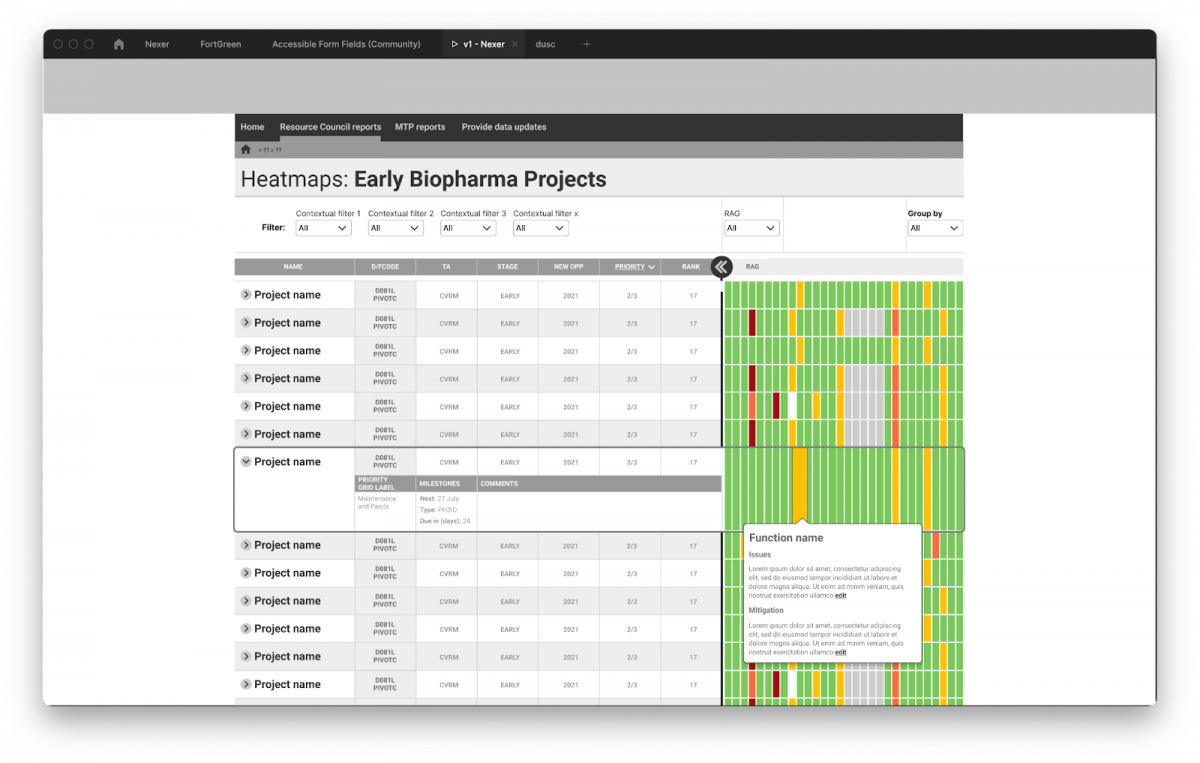
Overview
These are some journey maps examples I created to better understand users and the actions they went though to provide monthly updates to a business-critical resourcing tool for AstraZeneca.
Quick note on language, these are also sometimes referred to as customer journey maps or user journey maps, but they are very similar.
Benefits
Journey maps are great for distilling processes down into a format which is easily understood by everyone on the team.
These also allow easy identification of the stages of the user journey and highlight user pain points.
They also allow us to uncover any issues issues in the journey – addressing these early saves a bunch of time in development.
For example, I often uncover service design/ business process issues which fall outside of the tool itself, but which need considering to to ensure our solution is coherent and ultimately successful.
By comparing these maps across different user groups I can prioritise opportunities for improvement in a way that works for the user and the client.
You can read more general information in journey mapping (as well as the closely related experience maps and service blueprints on the excellent Nielsen Norman Group website.
Final version
Examples of the final journey maps are above. A more in-depth walk though of how we arrived at this journey map follows…
How we got there
User identification
From previous user research I’d already identified our user groups, and how they fitted into the wider business process around the product.
It had become clear that there were two key groups we needed to focus on, which we called;
- template creators &
- template completers.
Draft journey map
We drafted what we thought were the key stages of the journey for each user group.
Against each stage of the journey I considered the specific information we needed to capture. On this project, this was;
- Specific actions (we knew high level but not detail)
- Touchpoints (people/processes/platforms)
- Opportunities for improvement
- Owners of each stages OR…
- …additional stakeholder we might need to engage with.

Discussion guide
I drafted a discussion guide for client approval. This was to ensure agreement on the areas of research, and to provide a guide for the user researcher (me in this case) to make sure all agreed areas were covered in the user interviews.
Finding participants for usr research
We needed to choose our participants carefully. There were many areas of the business we might have sourced them from.
But we wanted to make sure the participants we chose would be representative of the variety and diversity of the user groups they represented.
User Research
Having sourced our candidates, I performed user experience research . We choose remote moderated as the user research method, which effectively means walking the candidate through their journey via MS teams.
Post it note observations were added to our draft journey map in the approximate part of the process they corresponded to.
We also captured multiple screenshots of related service, touch points and tools which supported our users on their journey.

How to synthesis user research data
After collecting all the data from the user research sessions, I performed some analysis and synthesis of the raw data which this time round involved:
- Cleaning and sanitising the data
- Refining our draft user journey from the data we collected in research
- Identifying for recurring themes or common patterns
- Extracting opportunities from verbalised or observed behaviour
These findings were summarised into a short report which was delivered to the client



